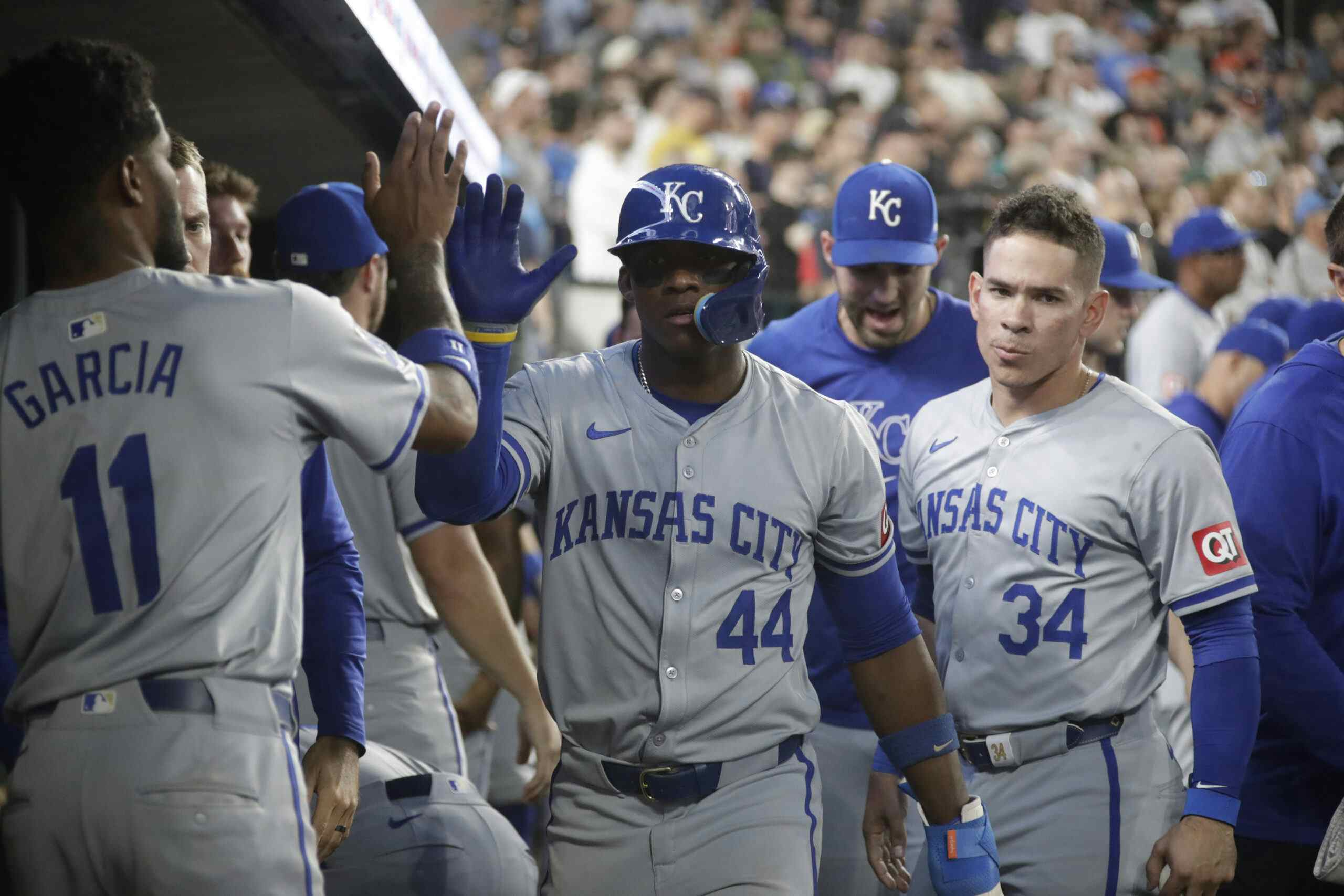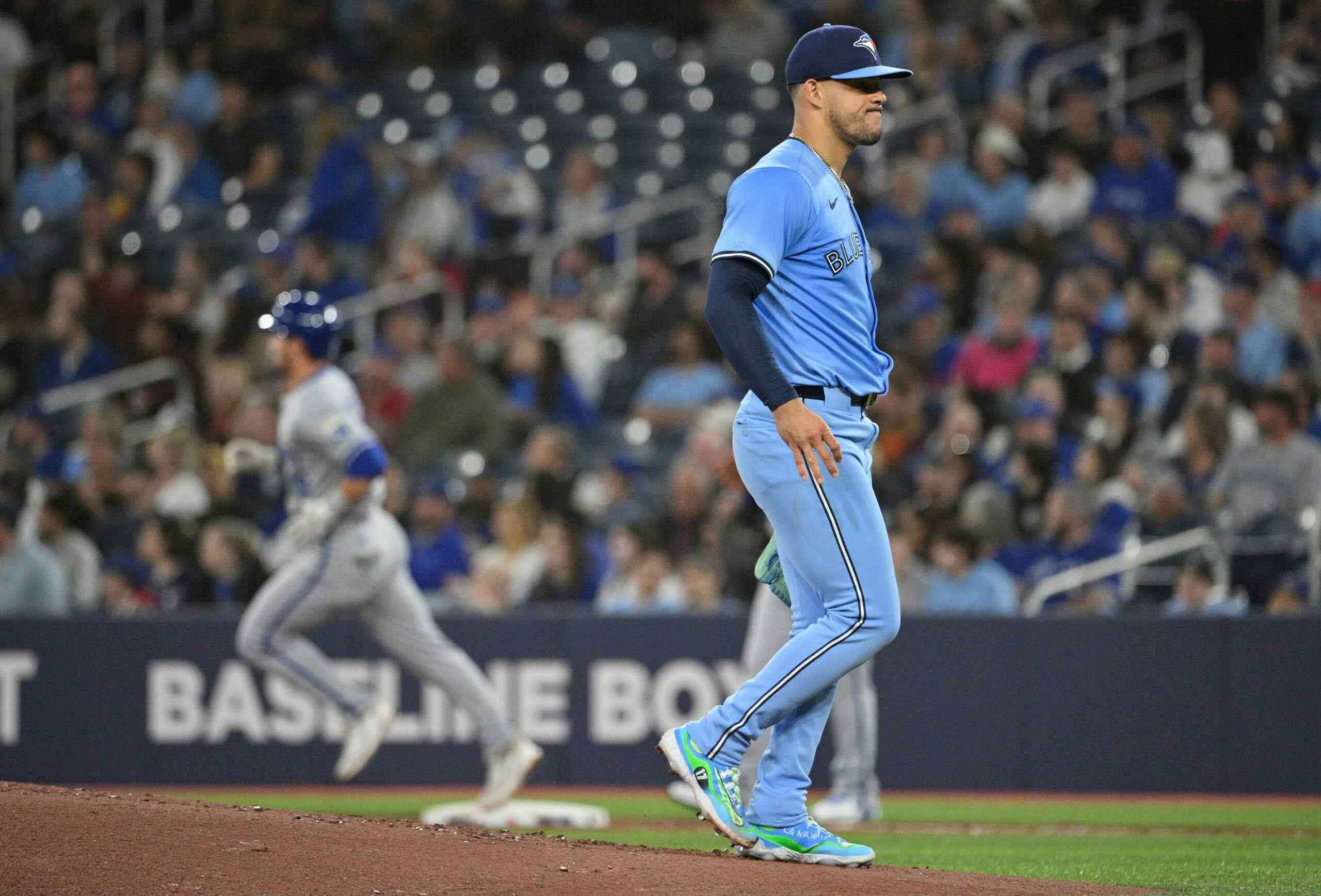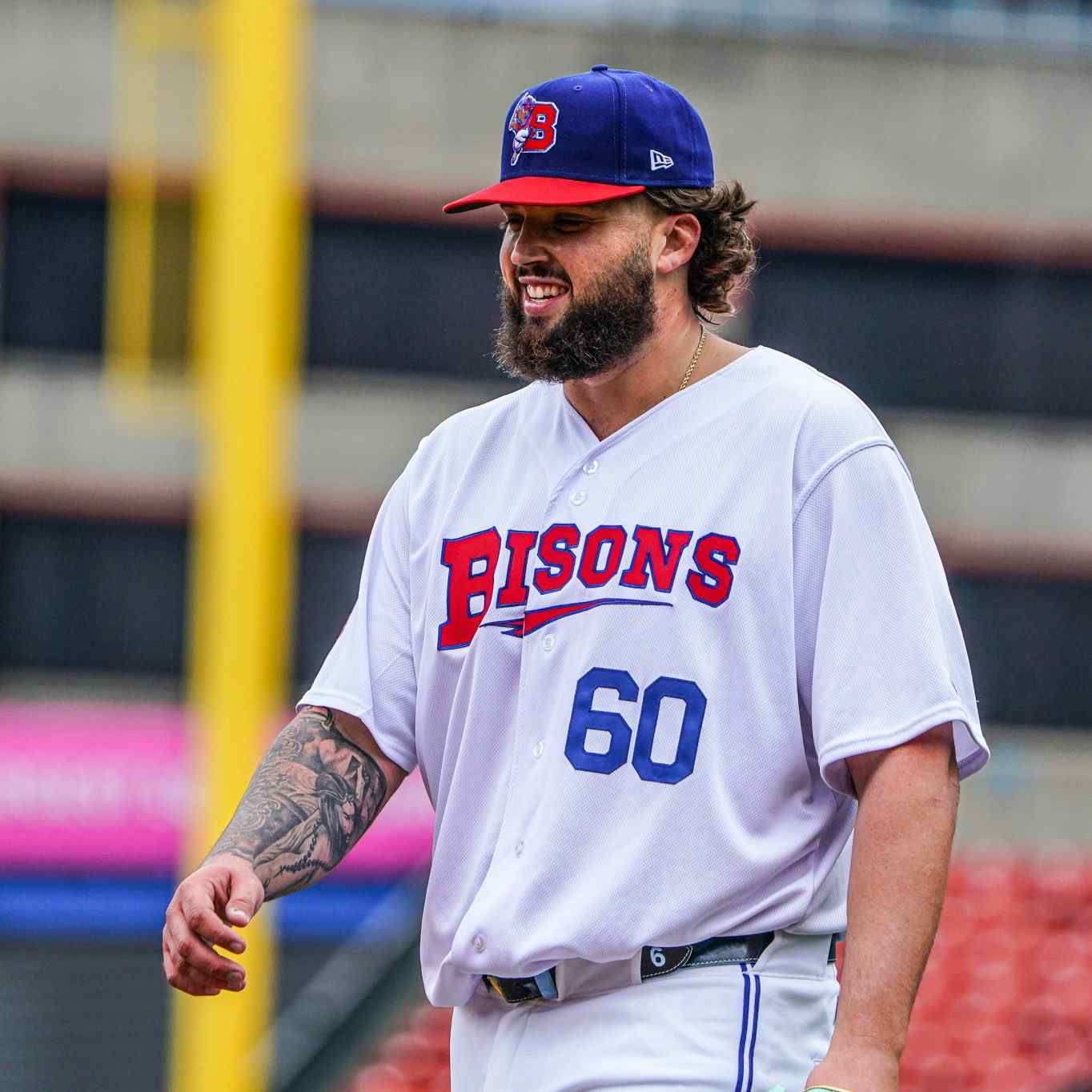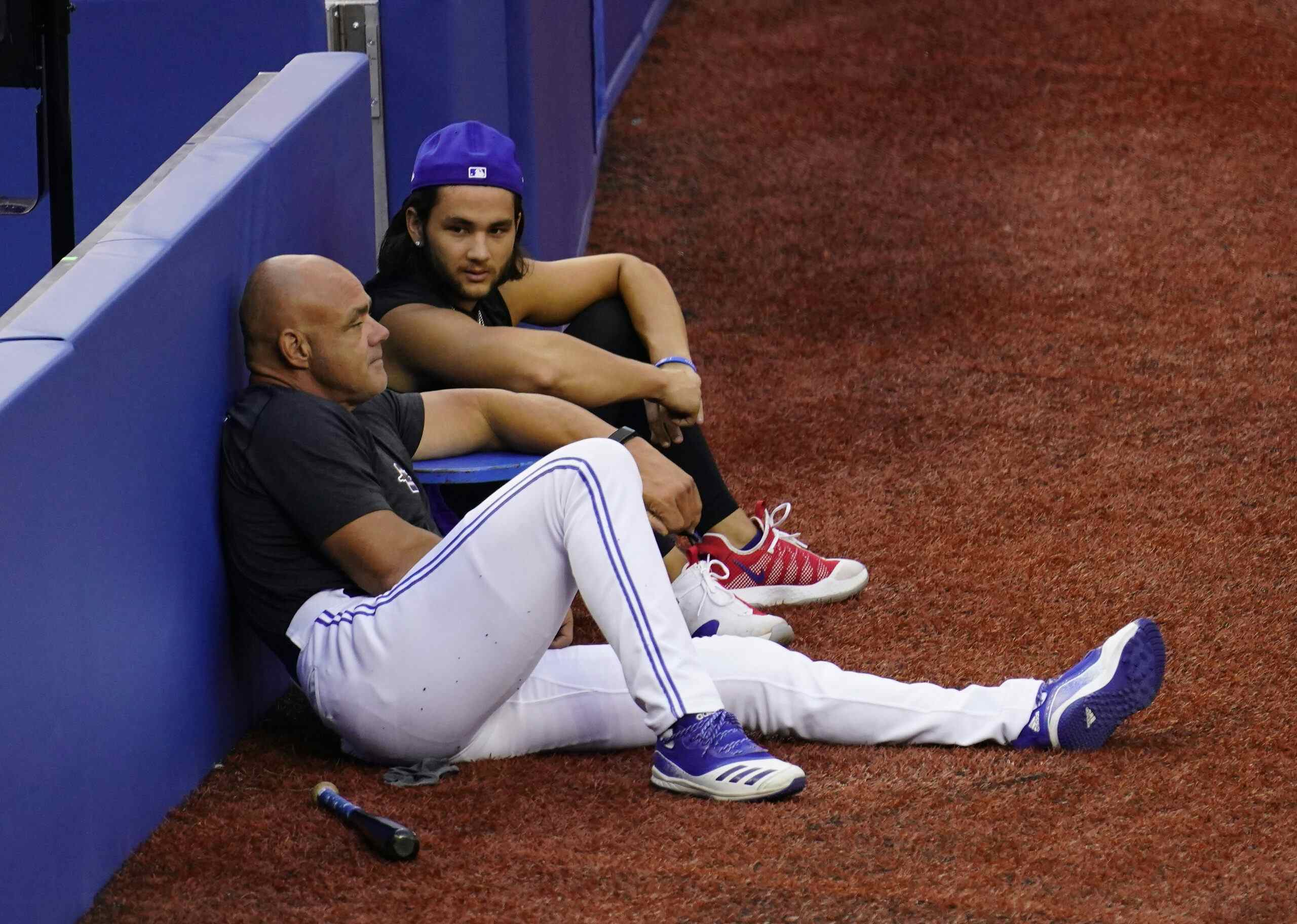Looking back at Vladimir Guerrero Jr.’s load management regimen
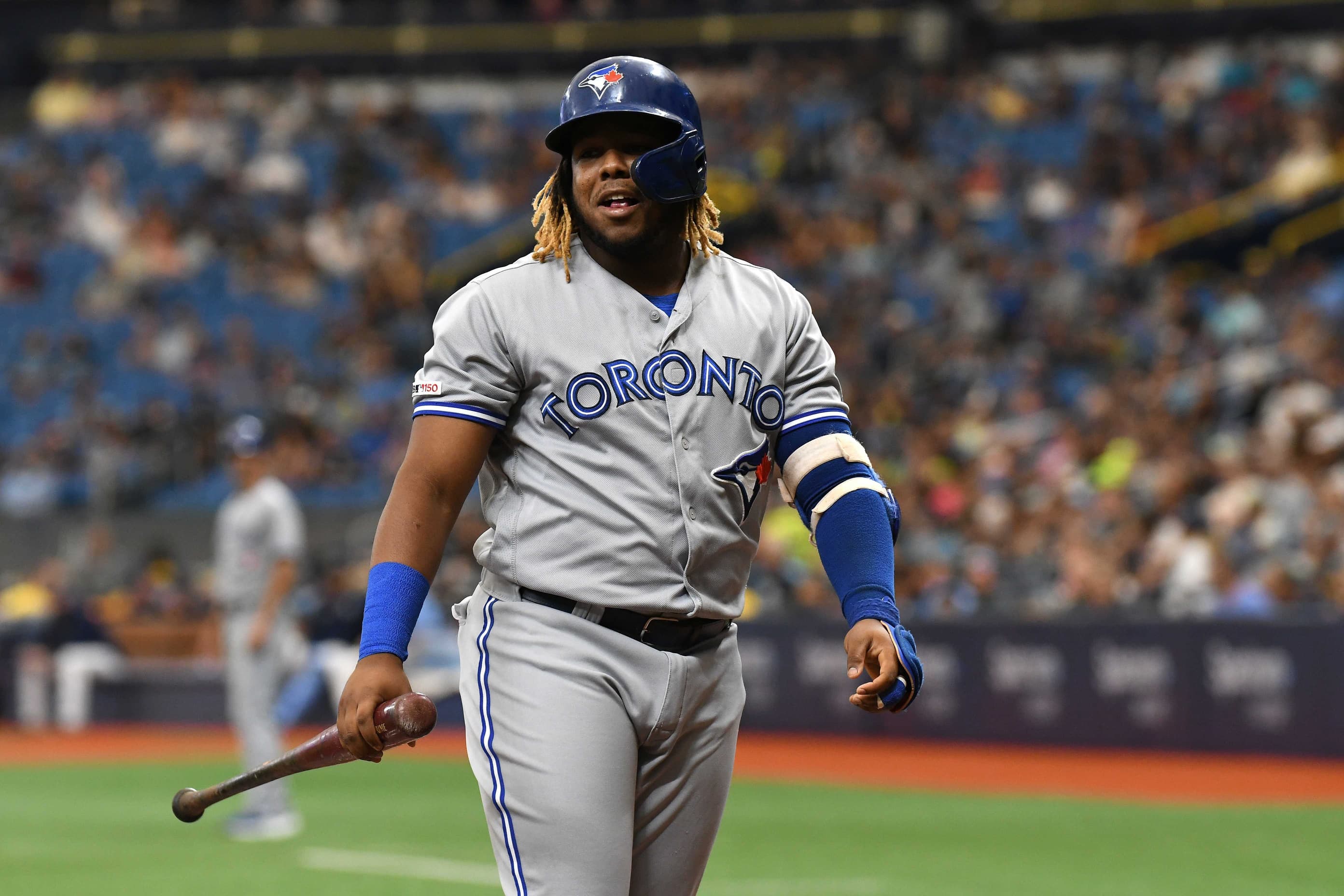
By Ian Hunter
4 years agoThe status of Vladimir Guerrero Jr. will be one of the most hotly contested Blue Jays storylines this winter. Judging by some of his latest workout videos, it looks like Vladdy’s already well on his way to being in the “best shape of his life.™”
Regardless, all eyes will be on the 20-year-old when spring training opens up in late February.
While the Blue Jays never came outright and said it, the team used a load management schedule with Guerrero throughout the 2019 season. For certain stretches, it was used to help ease him back into action after a few injuries. Unlike his counterparts Bo Bichette and Biggio, Guerrero never stationed himself in the field for long stretches.
For anyone who cares to scroll through his entire 2019 schedule, here’s how the Blue Jays structured Guerrero’s on-days/off-days and DH days. Nobody else on the roster had a schedule like this which kept them off the diamond this often.
The Coles Notes version of this schedule is as follows; Guerrero never played more than five consecutive games at third base at any point during the 2019 season. The sixth day was always a “load management” day or a DH day.
After the All-Star break, the Blue Jays used a 2-1-2 schedule where Guerrero never played more than two consecutive games in the field. That pattern happened from July 12 to August 1, when the pattern increased to 3-1-2-1. In September, he worked his way back up to playing five consecutive games at third base, but he went four months in between that pattern. He played five straight games in the field in late May and then didn’t repeat that pattern until mid-September.
Now, you may think to yourself: “They probably do this with all the rookies.” To be fair, the team eased Bichette and Biggio into everyday action once they were promoted to the Blue Jays, but after a week or so, both Bichette and Biggio’s playing time was largely unrestricted.
After Bichette played a 3-1-4-1-3-1 pattern during his first 13 games, he started 27 consecutive games at shortstop and 32 of the next 33 games at shortstop. He had one DH day from August 11 to September 19, the game when he took a pitch off the helmet.
From the time the Blue Jays promoted Bichette on July 29, he had no “off days” and only four DH days.
Biggio’s regimen was structured a little differently, but once he took the reins at second base, he didn’t look back, either. The Blue Jays eased him into the fold with a 3-1-5-1 schedule, but then Biggio went for long stretches as the team’s everyday second baseman. He had nine off days in the second half and only three DH days. Nine off days seems like a lot, but four of those scheduled off days coincided with a Vladdy DH day.
Meanwhile, Guerrero sat on the bench, DH’d or came into the game as pinch hitter 26 times in the second half. That’s 26 of 70 games after the All-Star break when Vladdy did not start for the Blue Jays at third base.
To no surprise, this DH days didn’t do any favours for Vladdy’s numbers this past season and he was far worse off as a DH than a third baseman. Guerrero slashed .219/.286/.323 with two home runs as a DH, as opposed to .288/.354/.467 with 13 home runs as a third baseman.
Admittedly, there were various reasons which factored into Guerrero’s playing time in 2019. The Blue Jays eased him back into the fold after he was hit on the hand by a Gerrit Cole fastball in mid-June. The club also eased up on his playing time in August and September due to a knee injury.
Guerrero didn’t miss time on the disabled list this past season, but in retrospect, maybe he should have. While he occupied the DH spot 12 times in the second half, the Blue Jays could’ve used to that spot to get other players off their feet and keep their bat in the lineup (like Biggio, for example).
One can understand the rationale behind this strategy, but the Blue Jays aren’t doing Guerrero any favours by keeping him on this load management regimen. His numbers suffered at the plate, and it forced Charlie Montoyo to shuffle around his lineup to shoehorn Brandon Drury into the mix more often than he needed to be.
Guerrero’s in-season injuries may have thrown a wrench into the team’s plans, but it’s clear the Blue Jays employed a set schedule for Vladdy during his rookie campaign. Those same restrictions weren’t set on Bichette or Biggio.
We can speculate whether this related to his conditioning, but a 20-year-old rookie sensation—the new face of your franchise—should be prepared to play in the field every day once he reaches the big leagues. This isn’t a 32-year-old returning from a catastrophic injury. This is a 20-year-old phenom.
The fact that Vladdy never played more than five consecutive games at third base suggests he wasn’t ready for the rigours of a 162-game schedule. The team can load manage his schedule and throttle his time in the field again in 2020, but it’s incumbent on Guerrero to take ownership as well.
Recent articles from Ian Hunter

